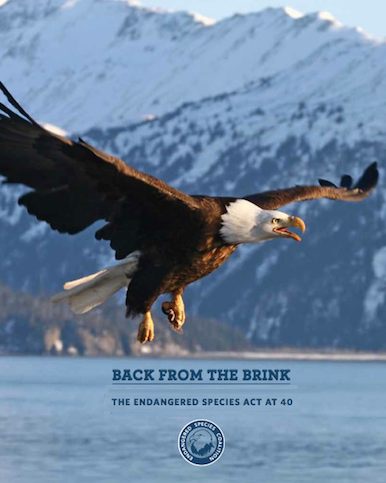 President Richard Nixon signed into law, 40 years ago on December 28, the strengthened Endangered Species Act after Congress realized that without further protection from human actions, many of our nation’s plants and animals would become extinct.
President Richard Nixon signed into law, 40 years ago on December 28, the strengthened Endangered Species Act after Congress realized that without further protection from human actions, many of our nation’s plants and animals would become extinct.
The bipartisan 1973 legislation is credited with saving hundreds of species from extinction, including the bald eagle, America’s national bird, which increased from 416 pairs in 1963 to 9,789 pairs. 30 additional species have fully recovered thanks to the landmark law, including the Steller sea lion, the American alligator, brown pelican, and Virginia northern flying squirrel.
Politicians believed that America’s rich natural heritage is of “esthetic, ecological, educational, recreational, and scientific value to the Nation and its people.” Today, the ESA protects over 1,400 U.S. species and 600 foreign species, with hundreds of animal populations having soared since the conservation measures were first instituted.
More Success Stories
- California’s threatened southern sea otter population increased by one thousand animals in 30 years.
- The tiny San Clemente Indian paintbrush went from just 500 plants in 1979 to more than 3,500 in 1997.
- Florida’s red wolf staged a tremendous comeback from a low of just 17 up to 257 counted in 2003.
- Florida’s Key deer population increased from 200 in 1971 to 750 in 2001.
- A tiny Texas fish, called the Big Bend gambusia, was on the knife-edge of extinction with a couple dozen holdouts, but the US Fish and Wildlife Service now counts a thriving population of over 50,000.
- Hawaii’s state bird, the Hawaiian goose, grew from a population of just 400 birds in 1980 to 1,275 in 2003.
- The Virginia big-eared bat species was restored from 3,500 in 1979 to 18,442 in 2004.




















[…] RELATED: US Endangered Species Act Turns 40, With Hundreds of Comeback Stories […]
[…] RELATED: US Endangered Species Act Turns 40, With Hundreds of Comeback Stories […]